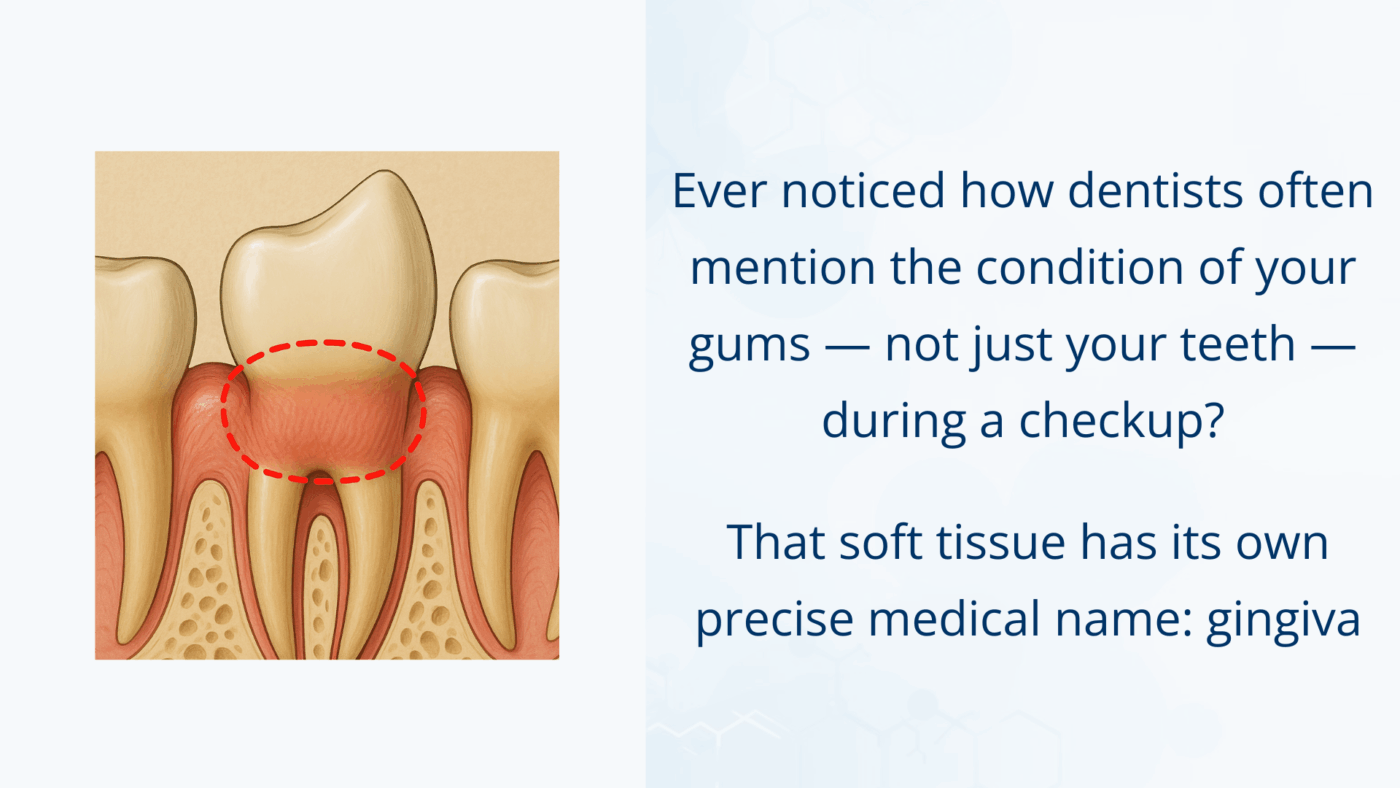OET Vocabulary, Word of the Day
Gingiva – Meaning and Usage in Medical English

👁 What Does “Gingiva” Mean?
Gingiva refers to the soft tissue that surrounds and supports the teeth, more commonly known as the gums.
The word comes from Latin gingiva, meaning “gum” or “mucous tissue of the mouth.”
It forms the part of the oral mucosa that tightly adheres to the teeth and the underlying bone, helping protect deeper structures from infection and trauma.
🔍 Clinical Usage
In clinical communication, gingiva appears frequently in dental and medical contexts.
Dentists and doctors may describe its color, texture, and contour to assess oral health.
For example, “gingival margin,” “attached gingiva,” and “receding gingiva” are common terms used in patient notes or reports.
You might also find it in patient education materials or discharge summaries, especially when discussing oral hygiene or periodontal health.
Example:
“Recession of the gingiva was noted around the lower incisors.”
→ The gums have pulled away slightly from the teeth, exposing the roots.
🎥 Watch the Short Video
👉 Watch our 30-second clip: Gingiva – Learn how to pronounce it and remember how it’s used in real medical English.
🌍 Study with OET Bank
Strong English skills are essential for success in healthcare communication.
At OET Bank, we strengthen your medical English through our original learning materials, designed specifically for international healthcare professionals who want to use English confidently in real clinical settings.
👉 Discover OET Bank learning materials


